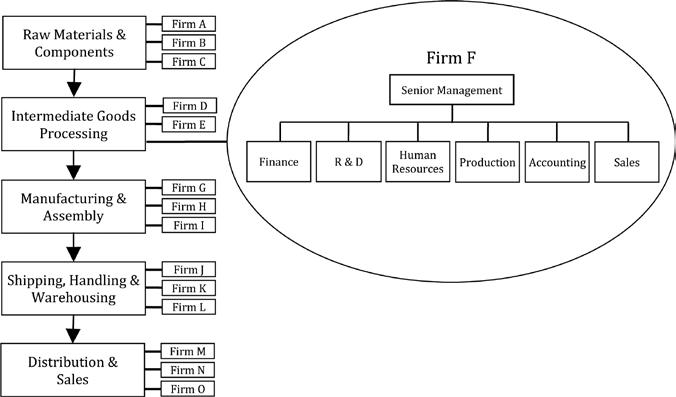Chapter 6
Corporate Structure and Culture
We have thus far developed general economic principles for maximizing shareholder value, but have said nothing about the firm’s administrative structure and corporate culture within which employees go about their daily routines. A company’s organizational structure and culture can be a source of competitive advantage if it results in a more cost efficient and flexible operation. In fact, many firms have failed because they were unable to adapt to a rapidly changing competitive environment because of a rigid and hidebound corporate hierarchy. Still other businesses have been torn apart from within because of a divisive corporate culture that failed to imbue its managers and workers with a shared vision and a sense of common purpose. THE SUPPLY CHAIN We will begin our discussion of corporate structure and culture by briefly reviewing the process whereby raw materials and components are transformed into final goods and services. The supply chain summarizes the process whereby production moves from the procurement of raw materials and components to the distribution and sale of the final good or service. The activity performed at each link in the supply chain may be performed by several firms in the same industry, each with its own organizational structure. The activities of two or more links in the value chain may even be performed by a single firm. The left-hand side of Figure 6.1, for example, illustrates the supply chain for the final production and distribution of a generic consumer good. The oval on the right-hand side of Figure 6.1 is the U-form organizational structure (discussed below) of Firm I, which may be one of several firms that occupy the intermediate goods processing link in this supply chain. 139




